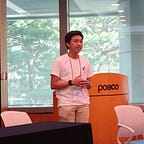Aquaculture 4.0: Seaweed as Our Sustainable Future Food Source and Help to Restore the Ocean
Our global demand for seafood consumption has more than doubled in the last 50 years, putting stress on the sustainability of fishing. Between 2014 to 2019, our worldwide seafood consumption per capita increased from 19.9 to 20.5 kg. Aquaculture is one of the fastest-growing food-producing sectors, supplying 40% of the world’s fish food. However, traditional aquaculture poses some threat to the environment, such as pollution from overfeeding, the use of antibiotics, antifoulants, and pesticides, habitat destruction from an abandoned pond, escapes that can dilute wild gene pool, and disease transfer like sea lice.
In 2050, the world population is expected to be 9 billion people. As the population rises, so will our dependence on aquaculture. To maintain the world's current consumption trend, we will need to produce 50–70% more food under a disturbing climate. In 2050, seaweed production is expected to be 500 million tons with up to 14% growth annually. The production is equal to 10% of the world’s present supply of food.
Industry 4.0 is growing and suggesting the use of computer science and engineering and associated with an online server with logarithmic and artificial intelligence software to manage and control the system in every aspect of aquaculture to provide better productivity and efficiency, reducing the overall cost. Thus, to improve aquaculture to the next level, there are four types of engineering.
First, computational fluid dynamics (CFD). CFD is a simulation through differential equations describing the most complete phenomena occurring in aquaculture systems. It has great potential to simulate the system and predict the proper geometry and condition (temperature, nutrient, concentration, photoperiod, carbon dioxide, light intensity, and water flow rate) for seaweed production with lower energy cost and increased the quality and quantity of the seaweed.
Second, mechanical and chemical engineering. This type of engineering provides the development of new materials and system designs to get more reliable materials and improve the processing technology for the aquaculture material.
Third, informatics and electrotechnical engineering. This field of engineering deals with sensors and data acquisition for aquaculture automation and the obtention of real-time data (RTD). This can support the aquaculture management to help to make decisions related to the complete aquaculture systems to prevent seaweed disease and contamination and the water quality or mechanical problems in aquaculture.
Fourth, biological science and engineering. The optimization of this field can support the modify the genomic from seaweed to produce seaweed with higher growth capability, better taste, darker color, and higher resistance to diseases.
Our ocean is 30% more acidic since the Industrial Revolution. The biological productivity of seaweed causes photosynthetic carbon storage and resulting in a CO2 sink. In China alone, seaweed aquaculture has helped removed approximately 3.8 million tons of CO2. Moreover, seaweed acts as nature’s water purification system and contribute to the coastal defense by reducing the hydrodynamic energy from waves. Through the optimization of seaweed aquaculture, the ecosystem services provided will be greater and contribute not only to human civilization but also to environmental well being as well.
References
Bill McGraw. (2017). The many sides of sustainability in aquaculture | The Fish Site. Sustainability Environment. https://thefishsite.com/articles/the-many-sides-ofsustainability-in-aquaculture
Buck, B. H., Nevejan, N., Wille, M., Chambers, M. D., & Chopin, T. (2017). Offshore and multi-use aquaculture with extractive species: Seaweeds and bivalves. In Aquaculture Perspective of Multi-Use Sites in the Open Ocean: The Untapped Potential for Marine Resources in the Anthropocene. https://doi.org/10.1007/978-3-319-51159-7_2
Cole, D. W., Cole, R., Gaydos, S. J., Gray, J., Hyland, G., Jacques, M. L., Powell-Dunford, N., Sawhney, C., & Au, W. W. (2009). Aquaculture: Environmental, toxicological, and health issues. International Journal of Hygiene and Environmental Health. https://doi.org/10.1016/j.ijheh.2008.08.003
García-Poza, S., Leandro, A., Cotas, C., Cotas, J., Marques, J. C., Pereira, L., & Gonçalves, A. M. M. (2020). The evolution road of seaweed aquaculture: Cultivation technologies and industry 4.0. In International Journal of Environmental Research and Public Health. https://doi.org/10.3390/ijerph17186528
Greenberg, P. (2014). Environmental Problems of Aquaculture | Earth Journalism Network. Aquaculture. https://earthjournalism.net/resources/environmental-problems-of-aquaculture
JRC. (2018). How much fish do we consume? First global seafood consumption footprint published | EU Science Hub. EU Science Hub. https://ec.europa.eu/jrc/en/news/how-muchfish-do-we-consume-first-global-seafood-consumption-footprint-published
Rasmus Bjerregaard, Diego Valderrama, Neil sims, Ricardo Radulovich, James Diana, Mark Capron, John Forster, Clifford Goudey, Charles Yarish, Kevin Hopkins, Michael Rust, C. M. (2016). Seaweed Aquaculture For Food Security, Income Generation, and Environmental Health in Tropical Developing Countries. World Bank Group. http://documents1.worldbank.org/curated/en/947831469090666344/pdf/107147-WPREVISED-Seaweed-Aquaculture-Web.pdf
Shahbandeh, M. (2020). • Seafood: per capita consumption worldwide 2019 | Statista. Food &
Nutrition. https://www.statista.com/statistics/820953/per-capita-consumption-of-seafoodworldwide/
Tang, Q., Zhang, J., & Fang, J. (2011). Shellfish and seaweed mariculture increase atmospheric CO2 absorption by coastal ecosystems. Marine Ecology Progress Series. https://doi.org/10.3354/meps08979
The Nature Conservancy. (2017). Sustainable aquaculture is the future of seafood. Perspectives. https://www.nature.org/en-us/what-we-do/our-insights/perspectives/the-aquacultureopportunity/
